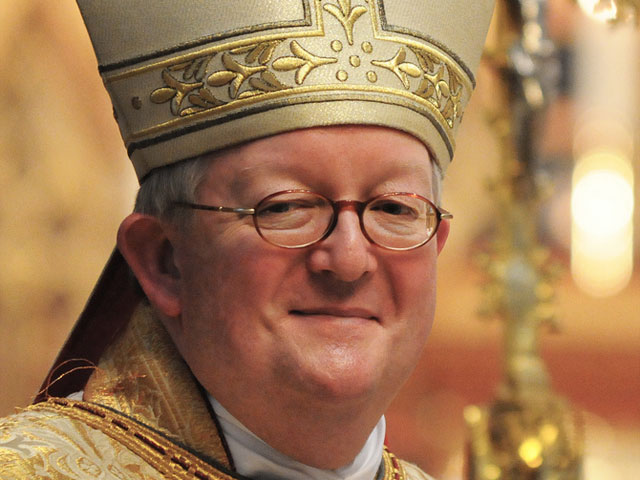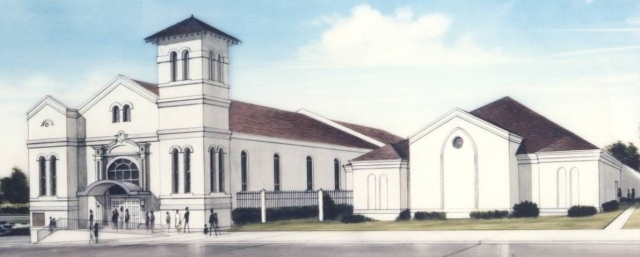Long ago, pre-Internet, some researchers tried to find out which movie had the greatest spiritual effect on viewers, in terms of provoking people to think about sin, salvation and life after death.
A Billy Graham movie perhaps? “The Ten Commandments”? “Chariots of Fire”?
Nope, apparently it was the R-rated, scare the living daylights out of audiences classic, “The Exorcist.”
With that in mind, let me state that I really enjoyed that USA Today feature that took director William Friedkin and author and screenwriter William Peter Blatty back to, well, their old Georgetown haunts 40 years after the release of that famous film.
However, I really do think that this story has one serious hole in it — but we’ll get to that shortly.
The key to the story is that, for Blatty, the major themes in his book and in the movie were rooted in his Catholic beliefs and, most of all, in his conviction that life-and-death battles between real evil and absolute truth take place and cannot be explained away. Reporter Brian Truitt made this a key issue in his news feature (which has also been circulated by Religion News Service).
The story of the story starts at Georgetown University, back when Blatty was a student:
It was in White-Gravenor Hall in a New Testament class that Blatty first heard of the 1949 exorcism of Maryland boy Roland Doe, and that sparked his interest in writing about the possession of Regan. And the infamous fall of Father Karras was influenced by Blatty watching one of his physics classmates take a hospitalizing tumble after trying to steal a final exam.
Blatty modeled Karras after his own feelings, he says. The death of Karras’ mother caused him to lose faith in God for a time, while the passing of Blatty’s mother also was deeply traumatic, “a period when my faith was more a hope than a belief.”
Exploring the evidence of his faith in writing “The Exorcist” was “very gratifying because it solidified my belief that I would one day see my mother again,” Blatty says.
Through the years, the film has grown in popularity, but Blatty missed the spiritual aspects from his original work, so Friedkin added 12 minutes for an extended director’s cut that was released into theaters in 2000.
And the bottom line? Why show such torment in the life of a young girl, her mother and the priest who, literally, gives his all to save the child? Blatty explains:
“The girl is us, everyone of us in this house, and the purpose is to make us feel vile, bestial, rotten and corrupt so that even if there were a God, he could not possibly love us.
“That in my head was not only the moral context, but it was the context that gave the audience a reason not to hate itself for liking the most sensational parts of the film.”
The director added this, at the end of the piece:
“It was not a promotion for the Catholic Church but definitely a story about the power of Christ and the mystery of faith that continues to this day,” Friedkin says. “I’m flattered when people admire it, but when they call it a horror that’s not how I feel about it.”
Blatty replies softly and simply: “Amen.”
OK, so what was missing?
A crucial element of the story is Blatty’s sincere love for his alma mater and the impact it had on his young life. As the USA Today story notes:
They shot in several places on the Georgetown campus, the place that not only strengthened Blatty’s own faith and inspired him to become a writer, but also led to some aspects of “The Exorcist.”
“The film is in many ways a hymn to Georgetown,” says Friedkin, 78.
That’s crucial material. So would it have been appropriate to have mentioned the other major news story that is developing about Blatty and his beloved Georgetown? As the National Catholic Register has reported:
More than a half century later, after winning an Academy Award for the screenplay adaptation of his bestselling novel The Exorcist, Blatty still calls Georgetown “home.” But his love for the pontifical institution has inspired him to support and sign a canon-law petition that asks the “Catholic Church to require that Georgetown implement Ex Corde Ecclesiae, a papal constitution governing Catholic colleges.”
If that effort fails, the petition signed by Blatty and 2,000 other Catholics calls for “the removal or suspension of top-ranked Georgetown’s right to call itself Catholic and Jesuit in any of its representations.”
Asked to explain why he has backed a petition that could damage the reputation of his alma mater, Blatty told the Register, “Today’s Georgetown isn’t Georgetown, but more like a living Picture of Dorian Gray.”
Worth a sentence, linked to the “hymn to Georgetown” theme in the USA Today story? If this isn’t relevant, after those glowing quotes, why not?











